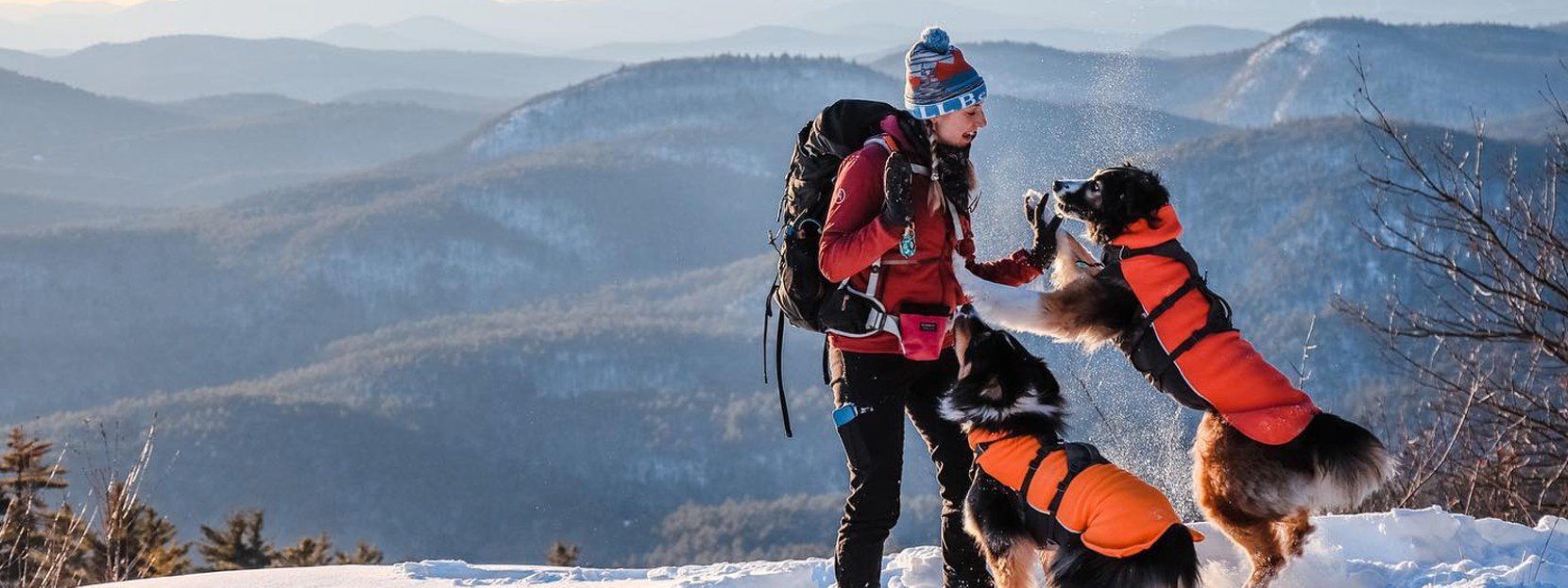
Dogs aren’t just pets, they’re family. And when we go outside, we always want our family along for the fun. So, we went to our expert at the Animal Refuge League of Greater Portland, to get her tips on how to tell if your dog is too cold, how to dress your dog for cold weather, and how to warm up your dog after being outside.
How to tell if your dog is too cold?
“While there is no universal temperature that’s too cold for dogs to be outside, there are still plenty of factors that can help determine whether the cold may negatively affect your dog’s comfort – or even their health,” Rose shares. Things like location of origin, coat length, size, and weather conditions can help you decide when cold is too cold for your dog.
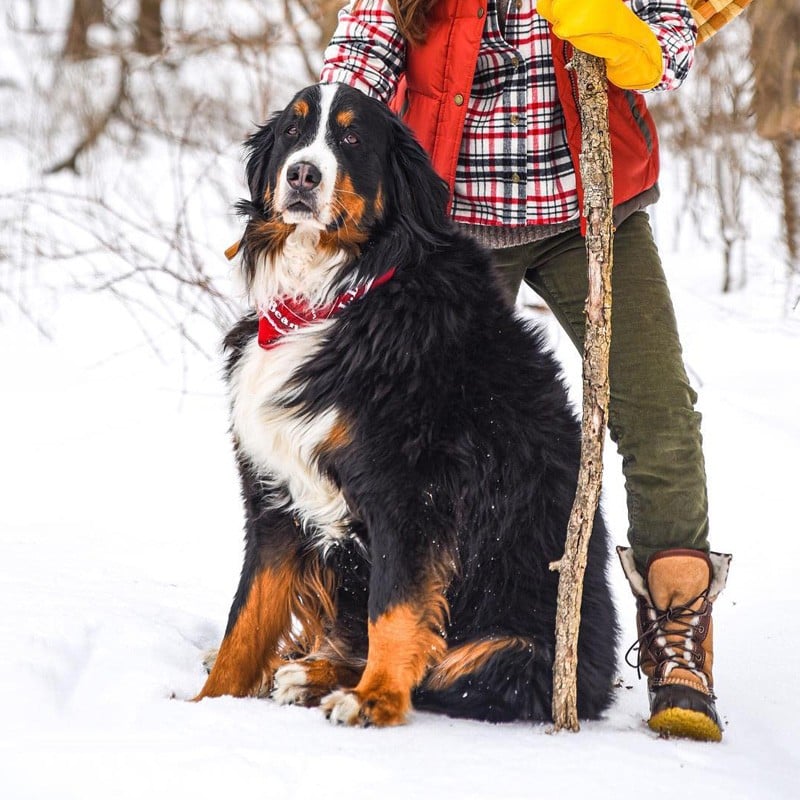
Dogs like huskies, St. Bernard, and other northern breeds with longer, thicker coats, tolerate colder temperatures better than shorter hair breeds.
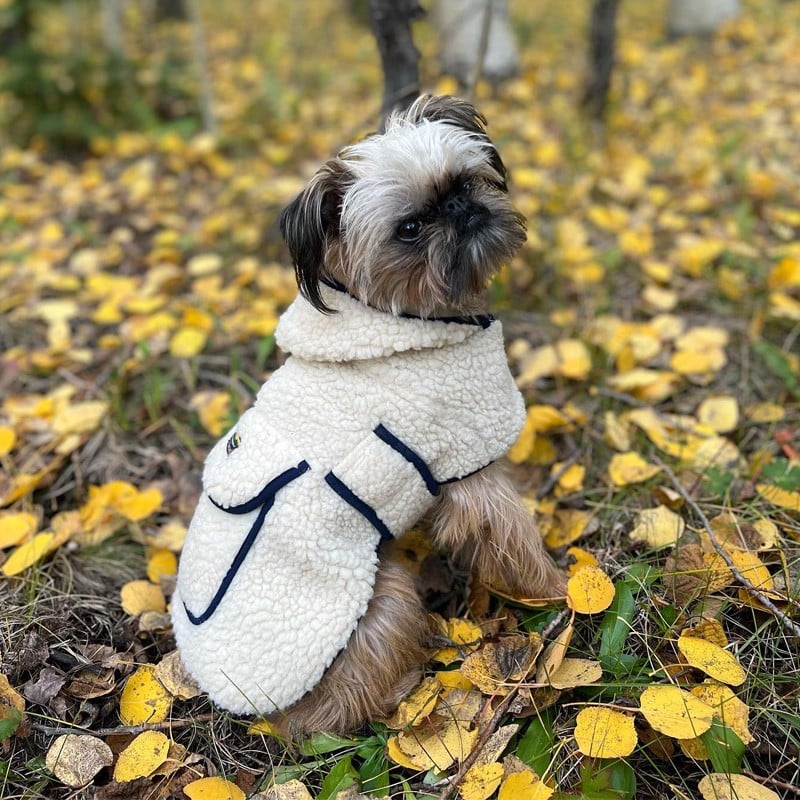
Size also makes a difference. Since smaller dogs have a higher surface area to mass ratio than larger dogs, they tend to lose body heat more quickly and get chilly faster. So, if you have a smaller dog with a thinner coat, you’ll probably want to take additional precautions in chilly weather.
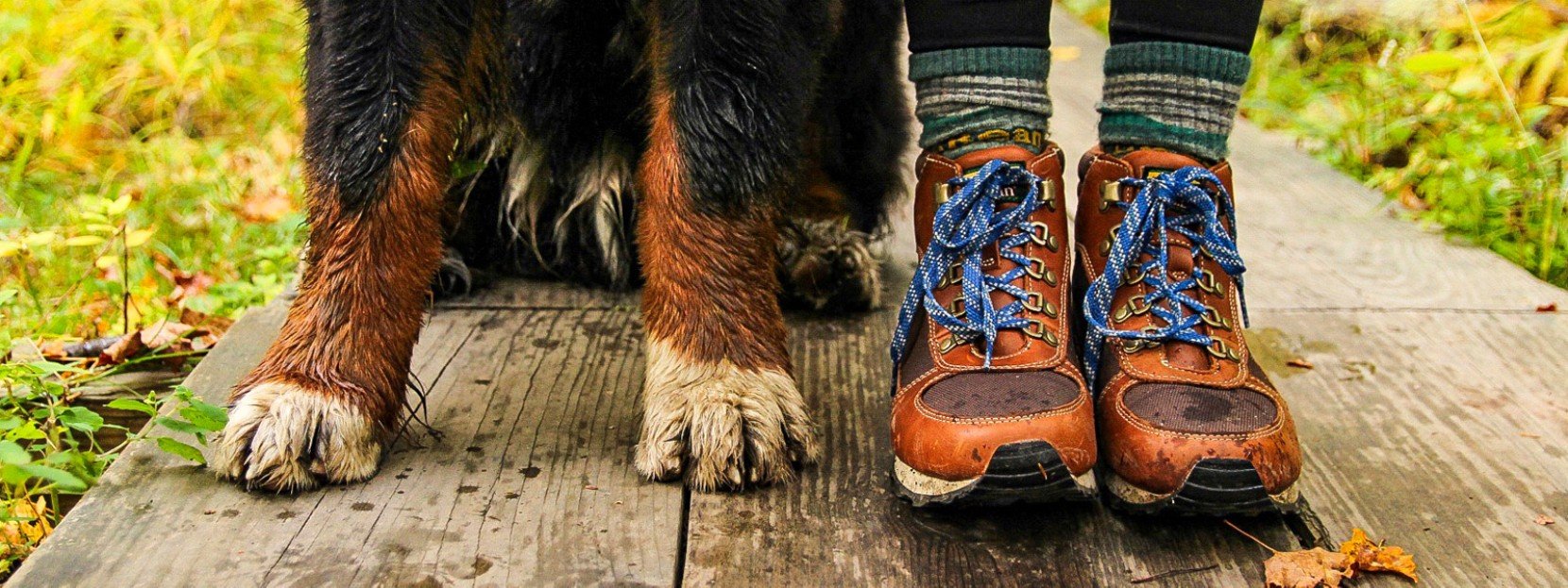
Weather conditions can also make a huge difference in the comfort of your canine. A wet dog in the rain or snow is obviously going to get colder a lot quicker than a dry one. Plus, if the wind chill is low, it can often make it feel a lot colder than it really is. These are all important things to consider when determining when it’s a good time to take your dog outside, and when it’s a good time to come back in. Remember, animals can suffer from hypothermia and frostbite just like we can – so safety should always come first.

QUICK TIP:
Common signs of hypothermia to look for in dogs include shivering, muscle stiffness, pale skin and/or gums, labored or shallow breathing, unlike behavior, and even whining and barking as this may be their way of telling you they are distressed.
Warning signs to watch for
Unfortunately, dogs can’t use words to tell us how they are feeling, but they can still show us. According to Rose, "if your dog is visibly shivering or in a huddled posture while out in the cold, you may want to cut your walk short and get your furry friend somewhere warm." In addition to frigid temperatures, exposure to ice and snow can cause chapping, irritation, and even cuts on the paws and paw pads, so it’s always a good idea to watch for limping or discomfort from your dog when walking in the elements. Salt and other chemicals used to melt snow can cause irritation as well.
“If your dog seems uncomfortable, it’s time to go back inside!”
Rose Vincent – Licensed Veterinarian Technician
How to dress your dog for cold weather
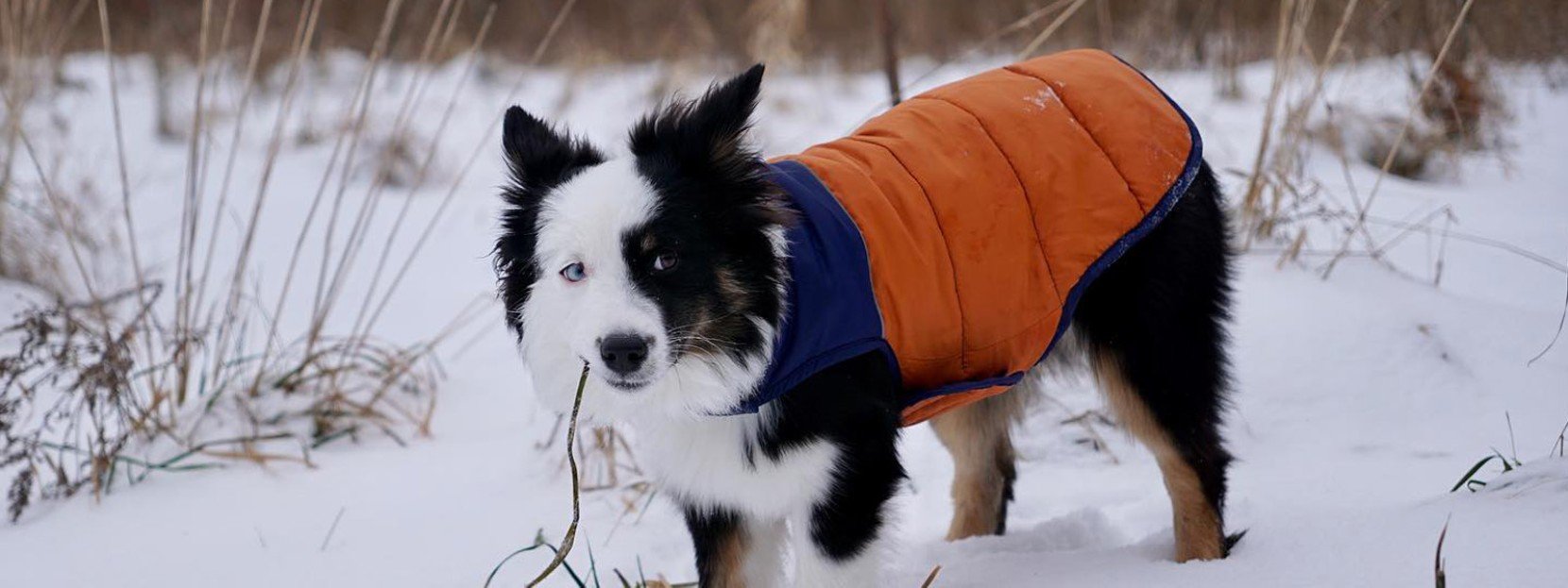
“One easy way to keep your four-legged friend comfortable and protected in the cold is dress them in a quality dog jacket, vest, or sweater before going out,” Rose told us. Larger dogs with thicker coats may not need much more than their fur, but smaller or short-haired pups can benefit greatly from the added warmth of an insulated layer. It helps regulate their temperature, and blocks wind and other weather (especially if you get one that’s weather resistant). Our dog jackets come in a variety of different styles, fabrics, colors, and sizes, so finding one to keep your pup’s tail wagging is easy. Plus, some of our designs match our family outerwear so you and your best buddy can coordinate outdoors for adorable adventures.
SHOP DOG JACKETSDon’t forget those paws! Dogs walk over some gnarly stuff in cold weather. Dog booties will protect their feet from colder temperatures, snow and ice on the ground, and unwanted irritants like salt and/or other chemicals used on icy roads. They may not like to have them on at first, but they’ll like not having cold, irritated paws more.

QUICK TIP:
If you plan to dress your dog for cold weather, start slowly and have them wear the new clothing for short periods of time. This will give them time to get used to it.
More tips for keeping dogs warm
- Make sure your dog is eating enough and getting the right nutrition. This can go a long way to giving them the energy they need to keep their bodies warm enough outside.
- If it’s colder than usual outside, you can always keep your walks shorter. After all, studies have shown that just 15 minutes outside can make us happier – the same goes for your dog.
- If your dog is older, very thin, or suffering from an illness, they are going to have a harder time regulating their body temperature. These dogs should always be housed in a heated location. If you head outside together, be sure to keep their walks and potty breaks on the shorter side to limit their exposure to the cold. It’s also a really good idea to dress them in a dog jacket and booties.
- It’s always safer to keep dogs in a heated house or garage during cold weather, but if your dog is housed outside or spends most of their day in an outdoor area, it’s imperative they have access to a well-insulated shelter that’s warm, dry, and protected from the wind.
- Use common sense! Watch the weather, always pay attention to your dog’s signals, and follow their cues. If your dog seems uncomfortable, it’s time to go back inside!
How to warm your dog up after being outside

After you’ve had your fun outside, make sure your dog has a cozy bed to come back to. With a premium dog bed designed to keep them at their coziest, they’ll get the extra insulation they need to warm up those cold bones. Not only does it help get them comfy cozy when returning from the outside, it keeps them warm throughout the days and nights, providing a soft sanctuary for them to find relief in every day.

Rose Vincent - Licensed Veterinarian Technician
Rose spent many years working in a general practice serving low-income clients and animal shelters in the Denver, CO area. In 2022 she moved to Maine with her family where she's continued her stellar work as a Licensed Veterinarian Technician at the Animal Refuge League in Portland, ME.
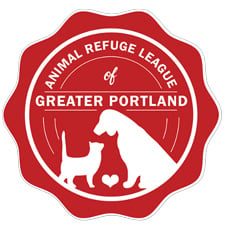
To learn more about the Animal Refuge League of Greater Portland, or to support them in their mission to advance animal welfare, visit arlgp.org.



